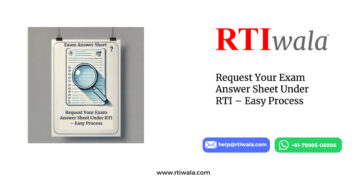The Make in India initiative aims to boost manufacturing and export sectors in India by providing various support measures, including export subsidies. Accessing detailed data on these subsidies is crucial for businesses and citizens to understand how public funds are used and to ensure transparency. RTIwala can help you navigate the Right to Information (RTI) process, which is a useful tool for accessing this information
Table of Contents
- Understanding Make in India and Export Subsidies
- How RTI Can Help in Accessing Data on Export Subsidies
- Step-by-Step Guide to Filing an RTI for Export Subsidies
- Challenges and How to Overcome Them
- Success Stories: RTI and Export Subsidies
- How RTIwala Can Assist You
- FAQs
- Conclusion
Understanding Make in India and Export Subsidies
Make in India is a government initiative launched in 2014 to encourage both multinational and domestic companies to manufacture their products in India. The program offers various benefits, including:
- Incentives for Manufacturing: Support for setting up and expanding manufacturing units.
- Export Subsidies: Financial assistance to boost exports from India.
- Infrastructure Development: Improvement in infrastructure to support industrial growth.
Export Subsidies are financial aids provided by the government to encourage companies to export their products. These can include:
- Direct Financial Support: Grants or subsidies to offset export costs.
- Tax Benefits: Reductions or exemptions on taxes related to exports.
- Export Credit Schemes: Loans or credits at favorable terms for exporters.
How RTI Can Help in Accessing Data on Export Subsidies
The RTI Act allows you to request detailed information about government programs and financial aids. When it comes to accessing data on export subsidies under Make in India, RTI can help you:
- Obtain Detailed Reports: Request reports on the allocation and distribution of export subsidies.
- Access Financial Records: Get information about the amount of subsidies given and to whom.
- Review Program Implementation: Understand how the subsidies are being implemented and the impact on businesses.
- Check Compliance: Ensure that the subsidies are being used as per the guidelines and not misappropriated.
Step-by-Step Guide to Filing an RTI for Export Subsidies
- Identify the Public Authority: Determine which government department or agency handles export subsidies under the Make in India initiative. This could be the Ministry of Commerce and Industry or other relevant departments.
- Draft Your RTI Application: Write a clear and concise application specifying the information you need. Be specific about the subsidies you are inquiring about, including the time period and type of support.
- Submit the Application: You can submit your RTI application online through the RTI portal or offline to the concerned department. Ensure you include the application fee as required.
- Follow Up: After submitting, track the status of your application. If you do not receive a response within 30 days, you can file an appeal.
Challenges and How to Overcome Them
Common Challenges:
- Delayed Responses: Sometimes, there may be delays in receiving information.
- Incomplete Data: Information provided might be partial or not detailed enough.
Overcoming Challenges:
- Regular Follow-Up: Stay in touch with the department and follow up on your application.
- File an Appeal: If the response is unsatisfactory, file an appeal to get the complete information.
Success Stories: RTI and Export Subsidies
RTI has helped uncover discrepancies in the distribution of export subsidies, ensuring that support reaches the intended businesses. For instance, an RTI application revealed irregularities in the allocation of subsidies, leading to corrective actions and greater transparency.
How RTIwala Can Assist You
Filing an RTI application for export subsidies can be complex. RTIwala provides expert assistance in:
- Drafting Your Application: Crafting a precise and effective RTI request.
- Submission and Tracking: Ensuring that your application is submitted correctly and tracking its progress.
- Expert Guidance: Offering advice on overcoming challenges and filing appeals if needed.
For efficient and effective RTI filing, contact RTIwala today!
FAQs
- Q1: What information can I request about export subsidies through RTI?
You can request details about the amount of subsidies given, financial records, allocation reports, and implementation details.
- Q2: How long does it take to receive information after filing an RTI application?
The public authority must respond within 30 days of receiving your RTI application.
- Q3: What if the information received is incomplete?
You can file an appeal with the first appellate authority to request further details.
- Q4: Can RTI be used to access information about private companies receiving subsidies?
Yes, RTI can be used to request information about how public funds are being used, including subsidies provided to private companies.
- Q5: How can RTIwala help with my RTI application for export subsidies?
RTIwala assists with drafting, submitting, and tracking RTI applications, and provides expert advice to ensure you receive the necessary information.
Conclusion
Using RTI to access data on export subsidies and support provided under the Make in India initiative ensures transparency and accountability. By following the steps outlined in this article, you can effectively gather valuable information. If you need assistance, RTIwala is here to help to make your RTI process smoothly.






















































